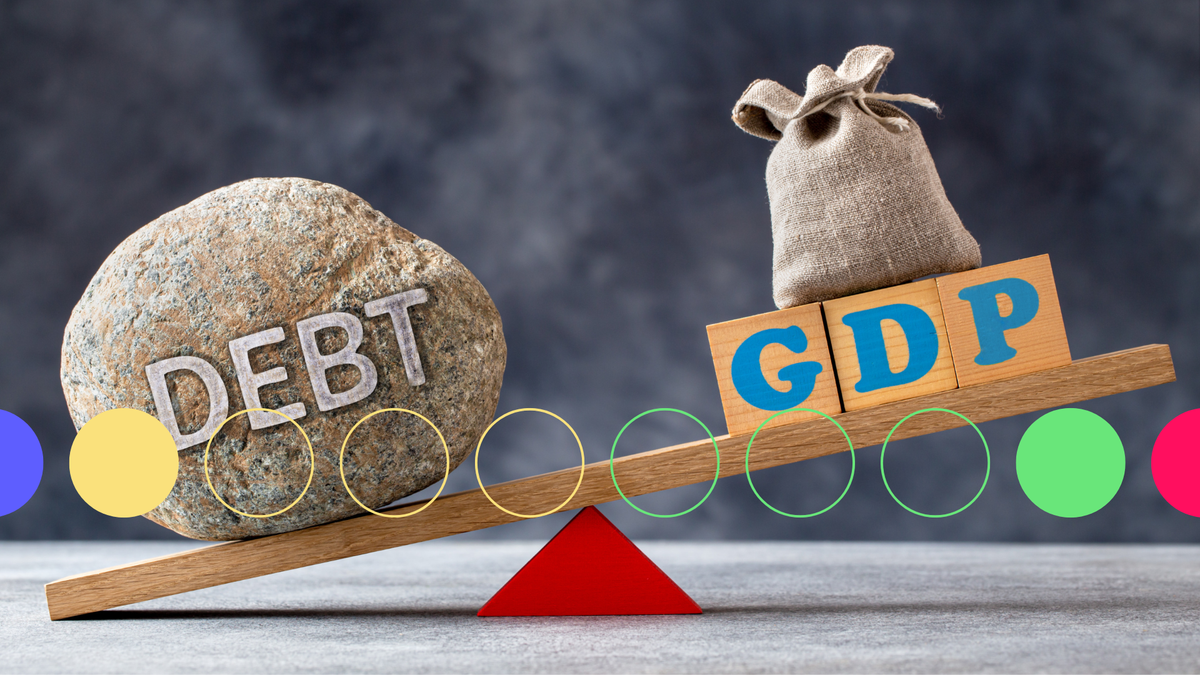
Navigating the Complex Landscape of Public Debt Restructuring Amid Global Economic Challenges.
Posted in :
Public debt restructuring is becoming more complicated due to inflation, tariffs, and global financial power shifts, with China and the USA playing critical roles in reshaping economic stability.
The intricacies of public debt restructuring, particularly in light of inflation and international tariffs, while discussing the roles of major economies like China and the USA.
In a world increasingly bound by intricate economic ties, the discourse around public debt and its restructuring has never been more pertinent. As an amateur finance enthusiast, I remember grappling with the sheer complexity behind economic terms like ‘debt restructuring’—it felt like trying to solve a puzzle with missing pieces. But understanding this topic offers significant insights into our global economy, particularly after the recent spring summit of the IMF where critical issues such as tariffs, inflation, and significant debt were addressed. Let’s dive in and unravel this multifaceted issue.
Understanding Public Debt and Its Challenges
What is Public Debt?
Public debt is the total amount of money that a government owes to creditors. It includes loans from domestic and foreign sources. Understanding public debt is crucial for strategic financial planning and ensuring economic stability. But why is it so significant?
The Significance of Public Debt
Public debt plays a vital role in global economies. It affects government spending, infrastructure development, and the ability to respond to crises. When a government borrows money, it can invest in essential services like education and healthcare. However, excessive debt can lead to financial instability.
Factors Influencing Public Debt Levels
Several factors influence public debt levels:
- Economic Growth: A growing economy typically generates more revenue for the government, which can help reduce debt levels.
- Government Spending: Increased spending without corresponding revenue can lead to higher debt. Governments often borrow to fund projects or stimulate the economy.
- External Influences: Global events, such as economic downturns or trade wars, can impact a country’s ability to manage its debt.
Recent Statistics on Public Debt
Recent data highlights the growing concern surrounding public debt:
- Global public debt rose to $88 trillion in 2021.
- The International Monetary Fund (IMF) projects a 10% increase in public debt across advanced economies by 2025.
The Balancing Act of Debt Management
Managing public debt is a complex task. As economist John Doe stated,
“The management of public debt requires balancing the need for funding and the risks involved in borrowing.”
Governments must carefully consider how much to borrow and the potential consequences of that debt.
Impacts of Public Debt on Economies
Public debt can have both positive and negative impacts. On one hand, it allows governments to invest in critical areas. On the other hand, high levels of debt can lead to increased interest rates and reduced economic growth. This creates a challenging environment for policymakers.
In summary, public debt is an essential element of economies worldwide. It influences services, infrastructure, and crisis response. Understanding the factors that contribute to public debt levels is crucial for effective management and planning.
Impact of International Tariffs on Debt Restructuring
International tariffs have become a hot topic in recent years. They are taxes imposed on imported goods, and their effects ripple through economies worldwide. But how do these tariffs relate to economic inflation? And what happens when countries face debt restructuring amid rising tariffs? This section explores these critical questions.
Understanding Tariffs and Inflation
To grasp the impact of tariffs, one must first understand their relationship with inflation. When tariffs are imposed, the cost of imported goods rises. This increase can lead to higher prices for consumers. In essence, tariffs can act as a catalyst for inflation. For instance, in 2018, tariffs between the US and China increased by an average of 25%. This spike contributed to an expected inflation rise of 2% in the US.
But why does this matter? Higher inflation can erode purchasing power. It can also complicate the economic landscape for countries already struggling with debt. As prices rise, the cost of living increases, and consumers may cut back on spending. This reduction in demand can slow economic growth, making it harder for nations to manage their debts.
Complications in Debt Restructuring
Rising tariffs can significantly complicate the debt restructuring process for nations. When a country is in debt, it often seeks to renegotiate the terms of its loans. However, if tariffs are driving inflation, the situation becomes more complex.
- Increased Costs: As inflation rises, the cost of servicing debt can increase. This situation makes it harder for countries to meet their obligations.
- Interest Rates: Central banks may be reluctant to lower interest rates in an inflationary environment. This reluctance can prevent countries from refinancing their debt at lower rates.
- Investor Confidence: High inflation and rising tariffs can shake investor confidence. If investors believe a country is struggling, they may demand higher returns on bonds, further increasing the debt burden.
Analyst Jane Smith succinctly captures this issue:
“Tariffs can reduce trade efficiency and create economic bottlenecks that exacerbate debt issues.”
This statement highlights how tariffs can create a vicious cycle, making it increasingly difficult for nations to escape their debt burdens.
Case Studies: Countries Facing Debt Issues Amid Tariff Increases
Several countries have found themselves in precarious situations due to rising tariffs and their subsequent economic impacts. Here are a few notable examples:
- Argentina: Argentina has faced significant economic challenges, including high inflation and a heavy debt load. The country has struggled to restructure its debt while dealing with the fallout from tariffs imposed by trading partners.
- Turkey: Turkey’s economy has been affected by tariffs and trade tensions, leading to inflation and currency devaluation. These factors have complicated the government’s efforts to manage its debt.
- Greece: Greece’s debt crisis was exacerbated by economic conditions, including inflation. While not directly related to tariffs, the broader economic environment influenced by global trade policies played a role in its struggles.
These case studies illustrate the real-world implications of tariffs on national economies. They show how interconnected global trade and debt management can be.
The Fragility of the Global Economic Landscape
The ongoing trade disputes highlight the fragility of the global economic landscape. Countries are not isolated; they are part of a complex web of trade relationships. When tariffs are raised, the effects can be felt far and wide. Nations that rely on exports may find themselves in a tight spot, struggling to maintain economic stability.
In conclusion, the impact of international tariffs on debt restructuring is profound. As tariffs rise, they can lead to increased inflation, complicating the debt management process for nations. The case studies of countries like Argentina, Turkey, and Greece serve as reminders of the challenges that arise in such an environment. Understanding these dynamics is crucial for policymakers and economists alike.
China’s Role in Global Debt Dynamics
China’s influence in the realm of global debt is profound. As the largest foreign holder of US Treasury bonds, China’s actions and policies can significantly affect not just the United States, but the entire global economy. This relationship is often described as a paradoxical one, where China is both a friend and an enemy to the US in the context of international finance.
China’s Influence as a Primary Holder of US Debt
As of 2021, China held approximately $1 trillion of US Treasury bonds. This makes China a key player in the US fiscal health. Why does this matter? Because the US relies on foreign investment to finance its debt. If China were to change its stance on US bonds, it could lead to significant repercussions.
Financial Analyst Bob Johnson aptly stated,
“China’s decisions regarding US bonds could have a dramatic impact on global financial markets.”
This statement underscores the weight of China’s influence. If China were to sell off its US bonds, it could lead to a spike in interest rates, making it more expensive for the US to borrow money. This could trigger a ripple effect, impacting economies worldwide.
Impact of China’s Economic Policies on Global Debt Restructuring
China’s economic policies also play a crucial role in global debt restructuring efforts. The country has been known to engage in debt diplomacy, providing loans to developing nations. However, this can lead to a cycle of dependency. When these countries struggle to repay their debts, it complicates the restructuring process.
For instance, if a country defaults on its loans from China, it may find itself in a precarious position. The terms of the debt may become more stringent, leading to further economic challenges. This situation raises questions: How can countries navigate this complex web of debt? What strategies can they employ to avoid falling into a debt trap?
Moreover, China’s policies regarding tariffs and trade can exacerbate these issues. Increased tariffs can lead to inflation, which in turn affects interest rates. If interest rates rise, it becomes more challenging for countries to manage their debt. This creates a vicious cycle that can destabilize economies.
The Paradox of a ‘Friend-Enemy’ in International Finance
The relationship between China and the US is often described as a “friend-enemy” dynamic. On one hand, the US needs China to continue purchasing its bonds to maintain fiscal stability. On the other hand, China has its own interests to protect, which can sometimes conflict with those of the US.
This dual-reliance creates a complex diplomatic relationship. For example, during trade negotiations, the US may push for China to increase its purchases of American goods. In return, China may seek concessions on tariffs or other trade barriers. This back-and-forth can lead to tension, as both countries try to balance their interests.
In essence, the relationship is a delicate dance. Both nations are aware that their economic fates are intertwined. If one falters, the other may feel the repercussions. This interdependence is what makes the global debt dynamics so intricate.
China’s role in global debt dynamics cannot be overstated. As the largest foreign holder of US debt, its influence extends far beyond its borders. The complexities of its economic policies and the paradoxical nature of its relationship with the US create a landscape that is both challenging and fascinating. Understanding these dynamics is crucial for anyone interested in global finance. The stakes are high, and the implications of China’s decisions will continue to shape the future of international economics.
TL;DR: Public debt restructuring poses challenges intensified by inflation and tariffs, impacting global economies, primarily led by China and the USA.
InflationImpact, China-USRelations, GlobalEconomy, FMI, EmergingMarkets, InternationalTariffs, DebtRestructuring, PublicDebt,public debt restructuring, global debt crisis, economic challenges, impact of tariffs on debt, China US debt dynamics, global inflation, international debt management
#PublicDebt, #DebtRestructuring, #GlobalEconomy, #InflationCrisis, #TariffImpact, #ChinaUSRelations, #EconomicPolicy,#China-USRelations, #EmergingMarkets, #DebtRestructuring, #PublicDebt, #InflationImpact, #FMI, #InternationalTariffs, #GlobalEconomy

